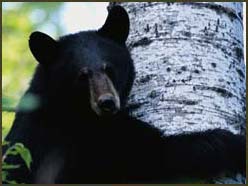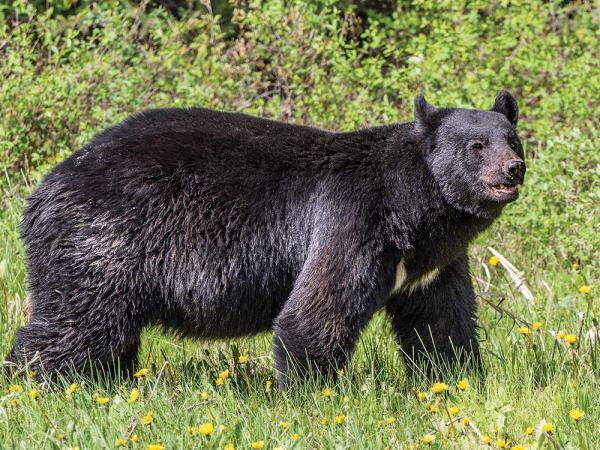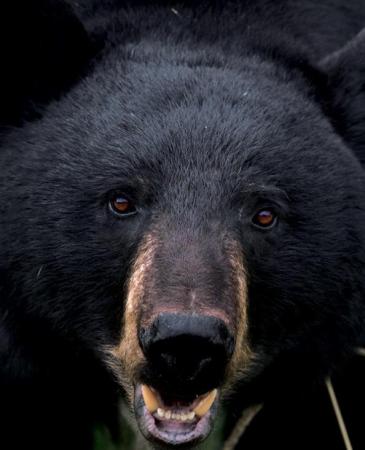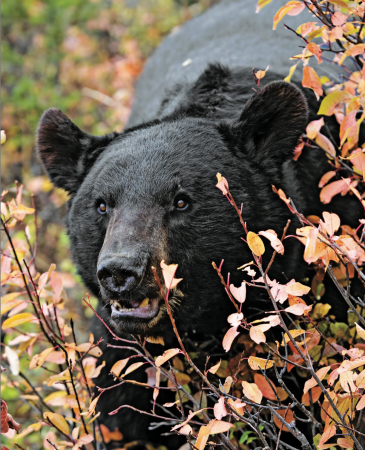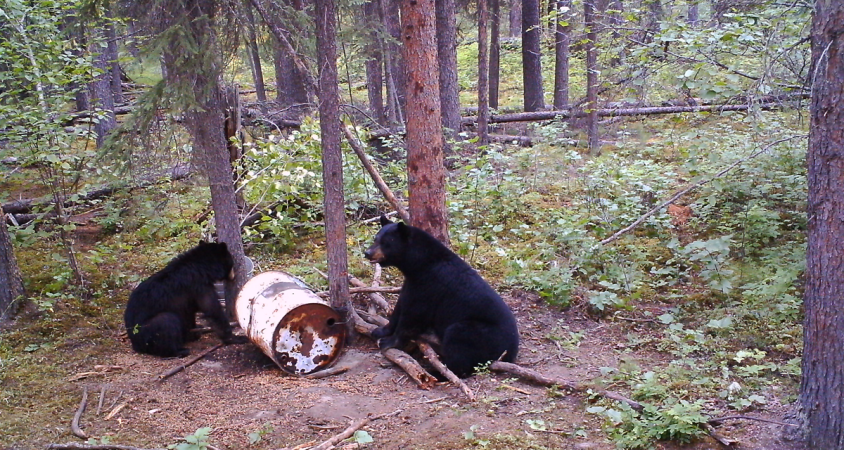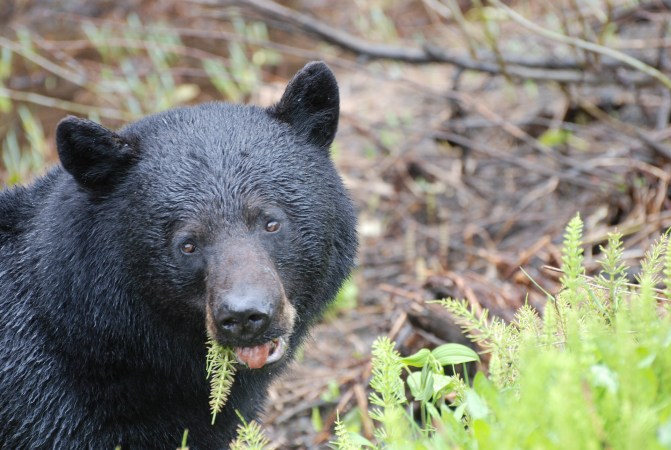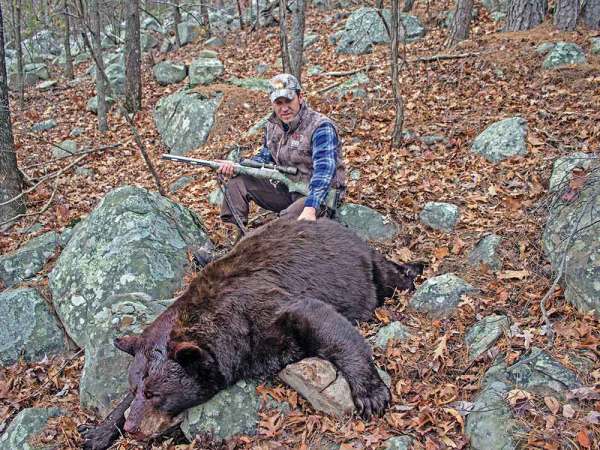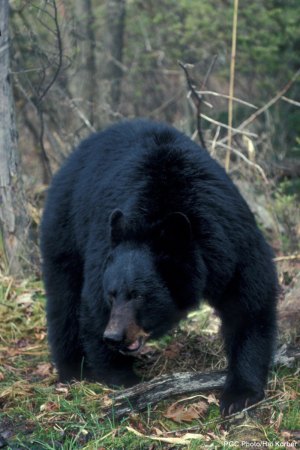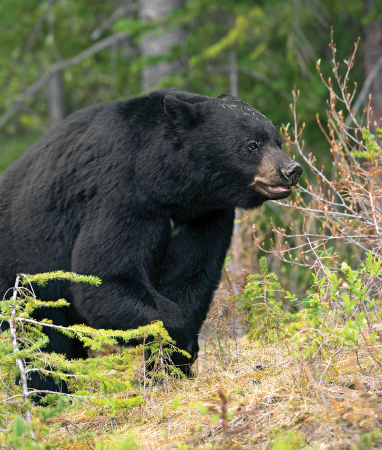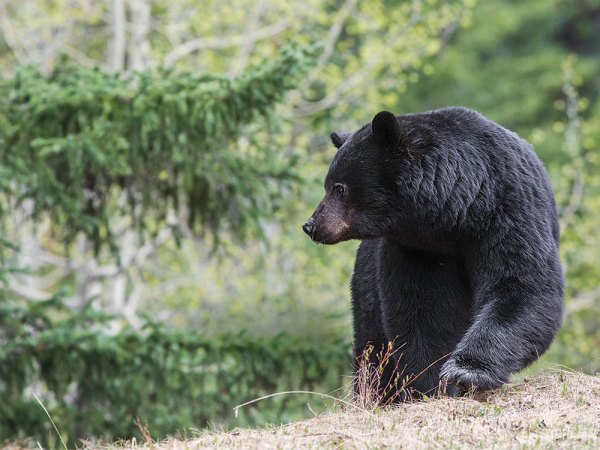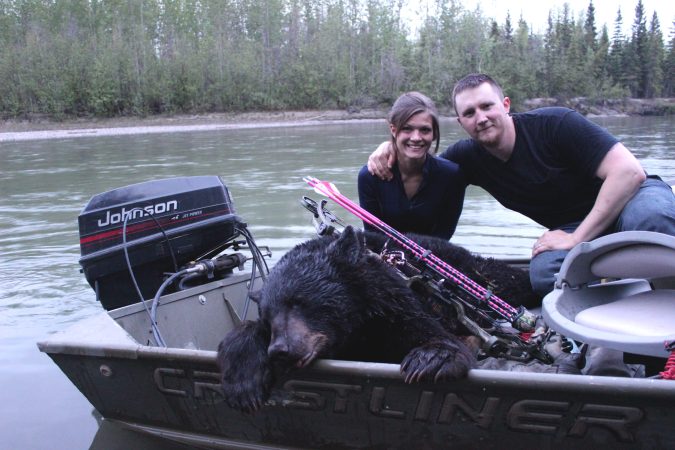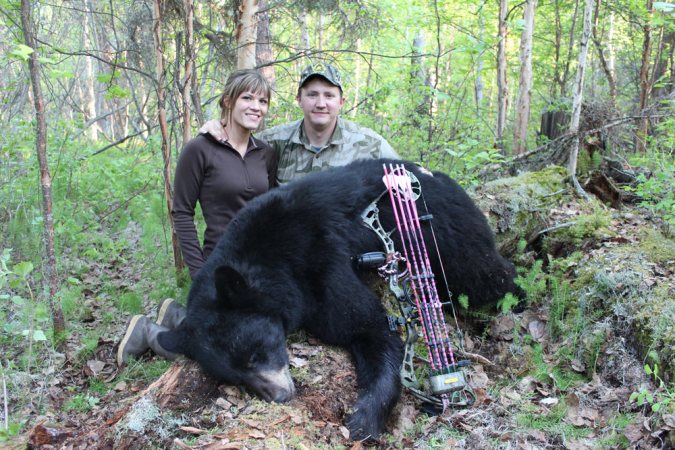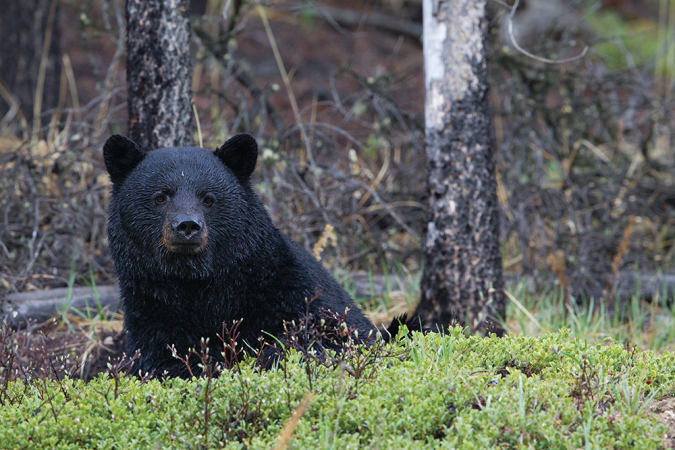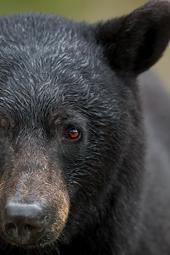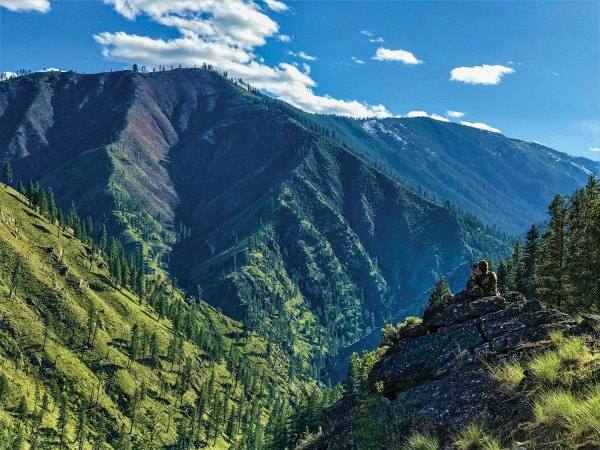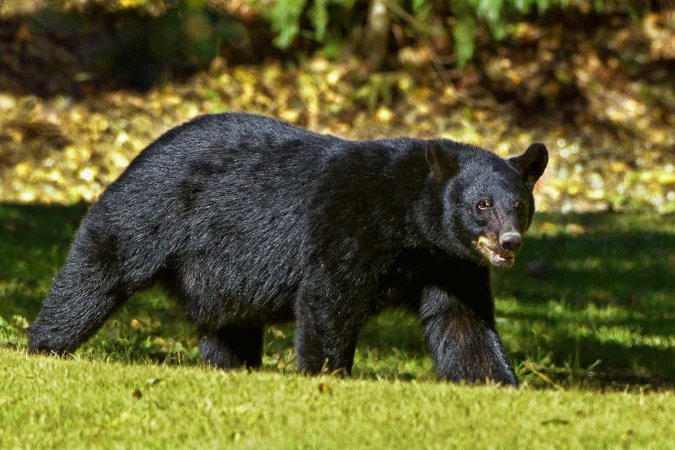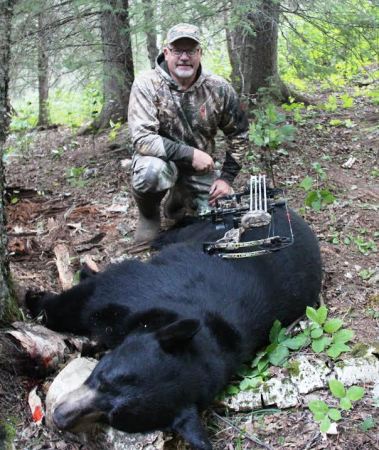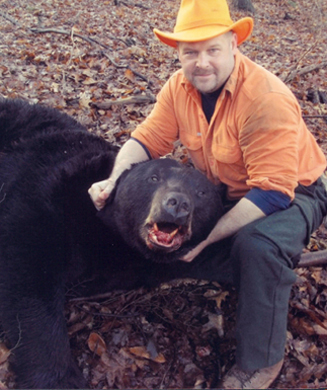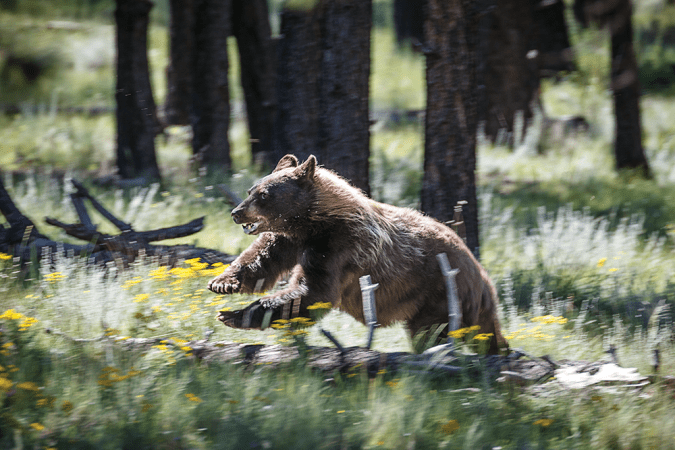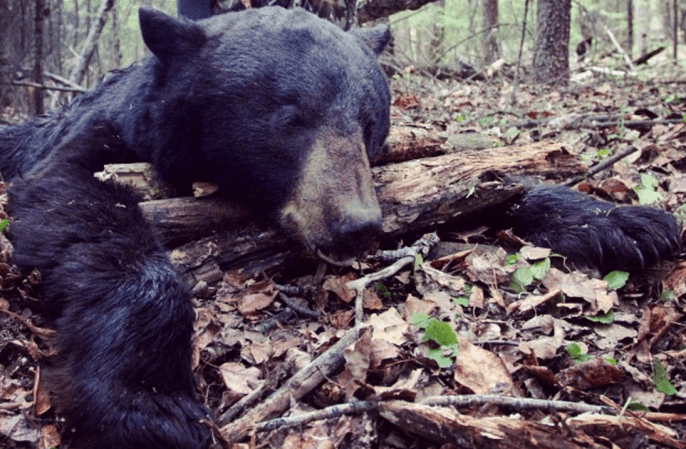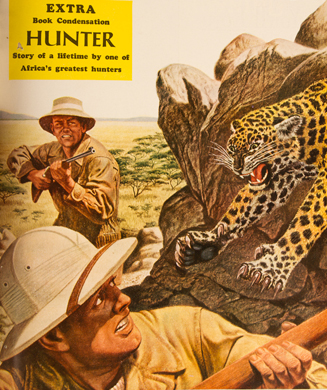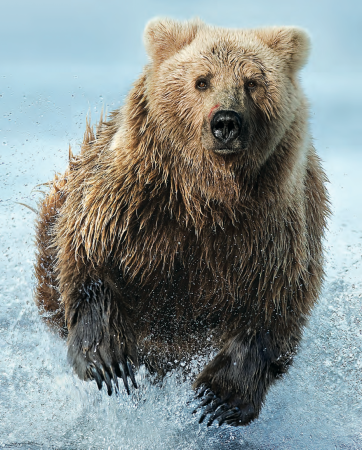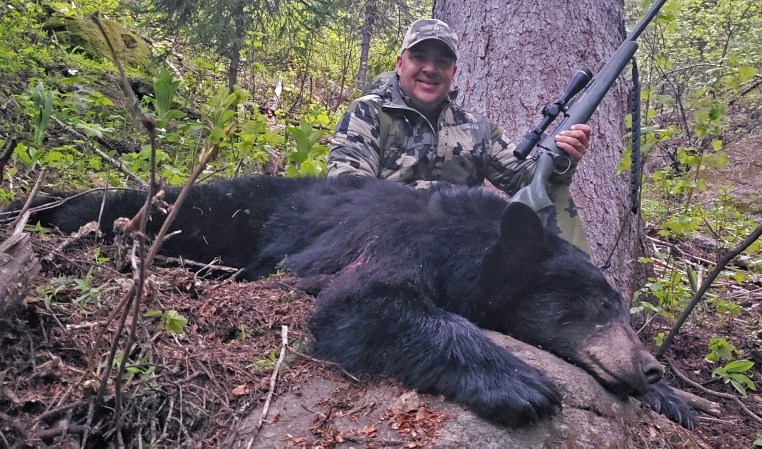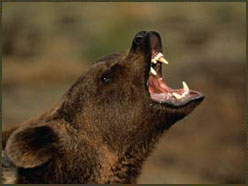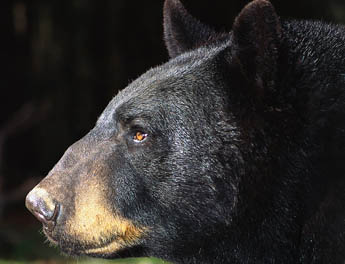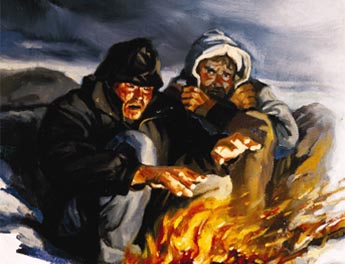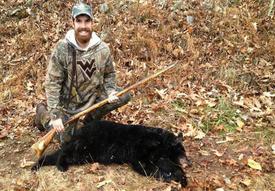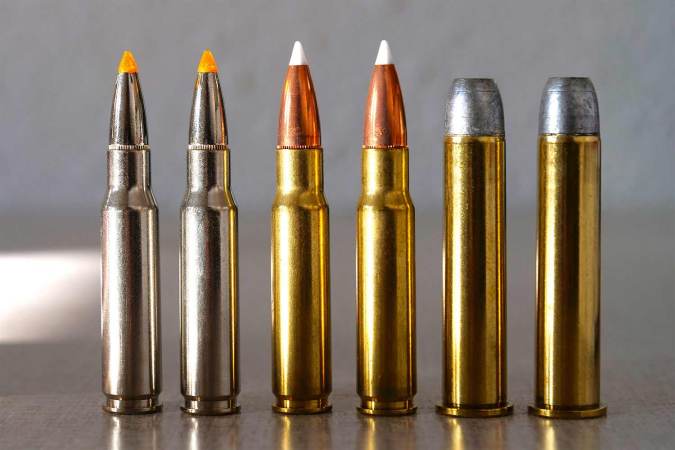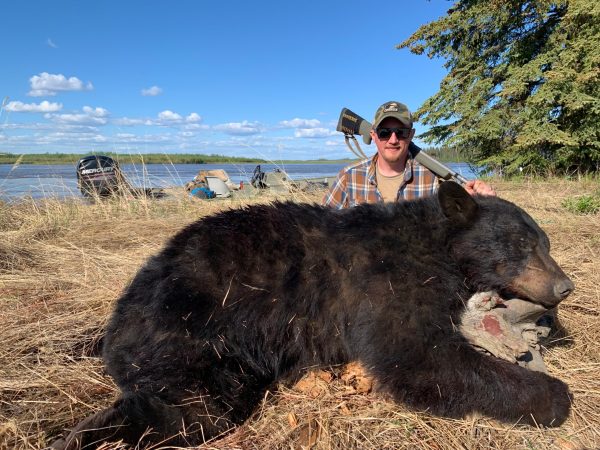Of all the North American game animals, the black bear is by far the least understood and most underestimated. Those who know this bear only from television or trips to the zoo consider it the bumbling fool of the forest, nothing but a “teddified” caricature. Trappers and hunters know the black bear as the fine-eating possessor of a fine pelt. But guides andoutfitters like myself, who spend thousands of hours every year learning about these animals, have a different opinion. We know about the black bear’s dark side.
Within the genetic makeup of every black bear there exists the potential for great cunning and violence. The question becomes not whether a black bear is capable of such behavior, but how much an individual bear must be pushed before it resorts to such action. Obviously a wounded bear is one thing, but what if a black bear has a hair-trigger temper or decides to put you on the menu?
Rancher Sevend (Sven) Satre might have been able to provide some answers to these questions if he were still alive. On June 14, 1996, the 53-year-old man was riding his horse, checking on his cattle in the timbered country near the central British Columbia community of Tatlayoko Lake. He never returned. Satre’s partially eaten body was located the next morning and an aggressive black bear was dispatched at the gruesome site by the search party. A necropsy performed on the bear proved that indeed it was the man-eater. Interestingly, it was in perfect health.
By all indications, the bear had stalked Satre and his horse for more than half a mile before rushing in for the kill. The horse and rider had only just begun to react to the attack when Satre’s saddle rolled after a tight left turn and he was thrown to the ground. Trackers concluded that Satre fought off the predatory black bear for less than 10 seconds before he was overpowered and killed. His axe was found at the site where the one-sided fight took place.
Tragic as the Satre case is, it pales in comparison to the story of Patti McConnell, 37, of Paris, Tex., who came to British Columbia as a tourist. Had she been aware of the dangers associated with visiting the bear-infested province, she certainly would not have been walking with her two children-son Kelly, 13, and daughter Kristen, 7-along a well-used boardwalk that led to the popular Liard Hot Springs on that quiet summer day in 1997.
A 220-pound predatory male black bear attacked Kelly, and McConnell did as any mother would: She tried to save her child. By all accounts, her heroic actions saved Kelly from the worst of the mauling. McConnell, however, died of her injuries, as did 57-year-old Ray Kitchen, who heard McConnell’s screams and came running to the rescue. The big bruin, jaws already dripping, tore into its new victim, killing him. Eventually the bear fell before a hail of lead from the gun of another Good Samaritan, who found the bear still standing over its prey.
Are Bad Bears Common?
So, how common are black bears that will attack and kill humans without provocation? From my experience, the answer is: not very common. On an average day guiding in my 1,500-square-mile black bear area on Vancouver Island, I’ll show my photography or hunting clients 10 to 20 black bears. That means that over the course of the last decade I’ve been fortunate enough to have seen close to 15,000 black bears. Of those, perhaps one third have seen, smelled or heard me. Out of that number (approximately 5,000 black bears), I’ve encountered only two that were, beyond any doubt and without provocation, stalking me.
In the first instance, my hunting partner witnessed the entire event from a distance of several hundred yards. The emaciated old bruin stalked me conitnuously from downwind, obviously well aware that its chosen prey was human. As I walked under a long rocky bluff (I had no idea the bear was there), the black bear crept along severafeet above me, working its way to a spot where the bluff petered out and our paths would intersect.
My partner, who could see what was about to happen, was waving his shirt and hat trying to get my attention. Seeing the movement, I trained my binocular on him and tried to interpret his frantic hand signals. At the same instant, the bear slid down the bluff and I whirled. It took a second or two to register just how close the bear was (about 15 yards away) and another few seconds to draw and fire my bow. A lucky hit put the scarred old boar down almost instantly.
On the second occasion, I was guiding a photography client along the shores of a long saltwater sound. We spotted a good black bear and pulled the boat to shore, but after working our way to within 80 yards, I called the stalk off, as we were close enough for photographs. About that same instant, the wind shifted, taking our scent to the bear.
Instead of hightailing it for cover, the bear crouched and began to stalk us. Waving my arms and yelling didn’t work. The bear stopped for a moment, stood on its hind legs and then charged! When the oncoming bear hit the 20-yard line, I aimed at the ground between us and let fly with a 200-grain Nosler slug traveling at 3,000 feet per second. The blast turned the bear, giving my client and me time to return to the boat. But what would have happened had we been unarmed? Would we have become a statistic? In my opinion, the answer is yes.
Never Trust a Black Bear
Hunters are arguably the best educated about the dangers associated with bear encounters, but invariably talk turns to grizzlies or Alaskan brown bears when the word “danger” comes up. Seldom will hunters talk about black bears being anything more than a “simple” nuisance. Nothing could be further from the truth.
And therein lies the single biggest misconception about black bears-the level of their intelligence. Not only are black bears the quickest studies in the woods (they put the wiliest whitetail to shame), but they are also unbelievably quick to use their knowledge and adapt. They learn and they learn well. More important, they keep learning for up to 30 years. Think about it: Black bears have a wider distribution than any other North American big-game animal, ranging from the mountains of Mexico to the icy subarctic north and from coast to coast. In fact, their range is a function of their ability to adapt to novel situations and react in a way that best ensures their survival.
I’ve seen wounded black bears set ambushes on their back trails that would make the most cunning grizzly bear or Alaskan brown bear seem unworthy. If you wonder whether the black bear you’re tracking is circling on purpose, believe it and start looking over your shoulder!
Many bait hunters also believe that since they are hunting black bears from a tree stand, they are safer than my clients on our spot-and-stalk hunts. Guess again. Unlike grizzlies and Alaskan brown bears, black bears can climb trees easily and quickly. Just ask Jeff Schoendorf Sr. from Jackson, Mich. Schoendorf was bowhunting for black bears in Saskatchewan on September 21, 2000, when a huge female black bear rushed up the tree he was in and attacked.
“It took her one bound to reach the base of the tree and one bound up the tree and she had me. I didn’t have time to do anything,” Schoendorf recalls. The enraged black bear tore at Schoendorf’s calf muscle, but couldn’t rip it off entirely because the tree-stand stabilizing wire was in the way. Schoendorf used his bow as a club, knocking the bear out of the tree, but that provided only a momentary reprieve. The bear rushed back up the tree again and took another swipe at Schoendorf’s leg. In all, the black bear attacked Schoendorf four times, very nearly killing him.
In Schoendorf’s case, the missing component to the hunt was a backup gun-a big-bore rifle capable of stopping a heavy-boned animal at close range. Yes, the odds of encountering a “killer” bear are quite low, but would you bet your life on those odds? Most archery hunters do.
Hunting black bears on the ground, spot-and-stalk-style, also comes with its inherent dangers, but fortunately, unlike in most baited hunts, an experienced guide is with the hunter at all times. That guide, if responsible, will be armed and absolutely capable of using his backup gun should the necessity arise.
Killer Bear Myths
The best course of action when stalking a black bear, however, is to avoid the need for a backup shot. To do this, forget what you may have read about taking a black bear through the shoulders. It’s hogwash. Always shoot a black bear through the lungs and/or heart. No black bear hit this way has ever survived long enough to escape or attack a hunter.
Another fallacy about black bears is that they’ll leave you alone if you play dead. In truth, black bears normally kill for food; when you play dead you only make the job of killing easier. Carrie-Lynn Fair, a 19-year-old from Nova Scotia, knows this well. When rescuer Dave Calnan came upon the gruesome scene, a black bear was “standing over her, literally ripping chunks off her leg.” Calnan won a Carnegie Medal for fighting off the bruin and saving the woman’s life.
It is difficult to say whether Carrie-Lynn Fair could have done anything to save herself from being mauled, but in many attacks, a little knowledge of black bear behavior would likely have neutralized the situation. Black bears display their feelings (and intentions) through body language. I can’t begin to recall the number of times I’ve had black bears bluff-charge. They’ll pop their teeth, huff, puff, slobber and bluster, but they don’t have any intention of attacking. Or, I should say, they don’t as long as we react properly.
The number-one rule in this situation is not to run. I am confident that a good number of “bluffing” black bears turn into attackers because their human prey triggers a chase response. Watch the bear carefully. If it’s not making eye contact but instead seems to be swinging its head around, only glancing up at you once in a while, then the bear is likely bluffing. If it’s popping its teeth, huffing and slapping at the ground but not coming closer, it’s likely warning you off. But if it’s coming at you with its eyes locked on, you’d better be prepared to do battle or die.
Fortunately, most black bears will run first, bluff second and attack third, as will most grizzly and brown bears. What differs is the amount of aggravation that will trigger an attack. A black bear is normally a tolerant sort-even the sows with cubs are inclined to leave rather than fight. Not so with the big bears. Bumble into a grizzly sow with cubs and you will be attacre rifle capable of stopping a heavy-boned animal at close range. Yes, the odds of encountering a “killer” bear are quite low, but would you bet your life on those odds? Most archery hunters do.
Hunting black bears on the ground, spot-and-stalk-style, also comes with its inherent dangers, but fortunately, unlike in most baited hunts, an experienced guide is with the hunter at all times. That guide, if responsible, will be armed and absolutely capable of using his backup gun should the necessity arise.
Killer Bear Myths
The best course of action when stalking a black bear, however, is to avoid the need for a backup shot. To do this, forget what you may have read about taking a black bear through the shoulders. It’s hogwash. Always shoot a black bear through the lungs and/or heart. No black bear hit this way has ever survived long enough to escape or attack a hunter.
Another fallacy about black bears is that they’ll leave you alone if you play dead. In truth, black bears normally kill for food; when you play dead you only make the job of killing easier. Carrie-Lynn Fair, a 19-year-old from Nova Scotia, knows this well. When rescuer Dave Calnan came upon the gruesome scene, a black bear was “standing over her, literally ripping chunks off her leg.” Calnan won a Carnegie Medal for fighting off the bruin and saving the woman’s life.
It is difficult to say whether Carrie-Lynn Fair could have done anything to save herself from being mauled, but in many attacks, a little knowledge of black bear behavior would likely have neutralized the situation. Black bears display their feelings (and intentions) through body language. I can’t begin to recall the number of times I’ve had black bears bluff-charge. They’ll pop their teeth, huff, puff, slobber and bluster, but they don’t have any intention of attacking. Or, I should say, they don’t as long as we react properly.
The number-one rule in this situation is not to run. I am confident that a good number of “bluffing” black bears turn into attackers because their human prey triggers a chase response. Watch the bear carefully. If it’s not making eye contact but instead seems to be swinging its head around, only glancing up at you once in a while, then the bear is likely bluffing. If it’s popping its teeth, huffing and slapping at the ground but not coming closer, it’s likely warning you off. But if it’s coming at you with its eyes locked on, you’d better be prepared to do battle or die.
Fortunately, most black bears will run first, bluff second and attack third, as will most grizzly and brown bears. What differs is the amount of aggravation that will trigger an attack. A black bear is normally a tolerant sort-even the sows with cubs are inclined to leave rather than fight. Not so with the big bears. Bumble into a grizzly sow with cubs and you will be attac
